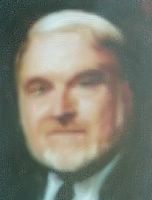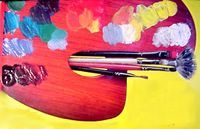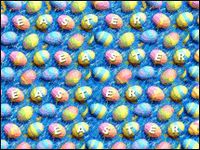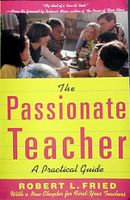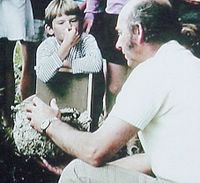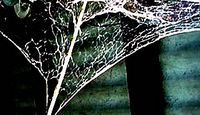
A house of cards!

Choice, Accountability and Privatization; Enuf is Enuf!
An interview this week on National radio, with a visiting educationalist about Roger Douglas’s ideas, and how they have effected Canadian education, ended up by saying more about the same ‘market forces’ ideology and their effects in New Zealand Schools.
As we all know, NZ Schools are now ‘self managing’ – well, they manage everything but the important issues of: teaching, curriculum and assessment! The Government keeps a tight control over those issues! Prior to market forces days primary schools were ‘managed’ by regional Education Boards. Some might say that good bits of the ‘baby’ were ‘thrown out with the bath water’!
The interviewer seemingly represented the views of the affluent self centred middle class parents, or perhaps she was simply playing the ‘devils advocate’!
The issues covered were:
1 Parental Choice.
In response to parental choice being a ‘good thing’ as parents ‘know what they want’ for their children, the guest replied by saying the ‘mantra of parent choice needs to be put to rest – it is as if a hospital should be run by the sick’, but she said, more importantly, individual choice sacrifices community well being in areas of the most need. Parents, the interviewer said, can ‘feel’ what is a good school. A later contributor to the discussion (by e-mail) said that international research does not confirm this – most parents judge schools by perception or by other parents views. Another contributor made the point that in reality it was the ‘good’ schools that were choosing the students!
2 Standardized Testing in Basic Skills.
This has been resisted so far in New Zealand .The interviewer said it was important so that parents could identify the ‘best schools’, and to this, the guest replied that in Canada ( and the USA and the UK) national ‘high stakes’ testing has narrowed the curriculum and only provided a ‘thin slice’ of a child’s potential to parents. As well, the very things parents want for their children (the arts, music, sports) are being dropped by teachers who, for self interest, teach towards the tests. If parents, the guest advised, really wanted to know how their child was progressing they would be best advised to visit their child’s teacher to see results of classroom diagnostic tests and samples of their child’s work.
3 The perennial dilemma of failing students.
Students leave our school without the basics in place, was the claim by the interviewer. This was accepted by the guest but she replied that continual narrow testing does not solve the problem .In the USA, political pressure has led to ‘the cow being continually weighed but never properly fed!’ It was said that in Canada any grade one teacher could identify the potential school failures – no need for tests - what is wanted is more thought about ways to help.
What is too often ignored, or down played, the guest stated, was the cumulative effect of poor socio economic factors. Extra funding in Canada had not been able to ‘level the playing field’. A competitive ethos, fueled by parental self interest, does not make the situation any better. Only inspirational leadership, quality teachers, and school and community collaboration, backed by resources, she said, can solve the problem.
4 The Standardized Curriculum.
The guest said that the imposed complex curriculums had created ‘curriculum crowding’ in Canada and, combined with testing, was killing teacher energy which in turn was cutting down time for valuable extra curricula and creative classroom teaching – ironically the very things the interviewer said parents looked for in ‘good schools’.
5 Managers or Leaders?
The interviewer thought that teachers were being precious about needing to be managed as against being led. The Canadian guest, in response, said that in her country since the 90s, managerial duties had distracted school principals from attending to their ‘core tasks’ of ensuring quality teaching and learning. It is now increasingly hard in Canada to attract ‘inspirational leaders’ to lead schools.
So it seems that privatization, (self management) choice, and accountability has not been the answer, even after 15 years, in both NZ and Canada; students still fail. As well ‘managerialism’ has resulted in a ‘de-professionalizing’ of teachers and, as a result, the time and energy of principals has become ‘bogged down’ in tasks divorced from real classroom issues.
Schools, the guest suggested, need inspirational leadership to return the focus to teaching and learning, and to put into practice all the exciting new ideas about how students learn. It is these issues, she believes, that will transform school.
Schools in democratic society must be more that about satisfying narrow self interest of parents, or single issue community groups. Our students are entering global a world beyond all our expectations. Their future success depends on us.
It must be beyond 'winner' and 'loser' schools - the health and well being of the whole community is dependent on how successful our are schools are. National guidelines are important to avoid 'capture' and to assure the public that their money is being well spent. Human need rather than human greed; choice , accountability and privatization are at best distractions, and have drawn attention away from the more important issue of the need to ‘transform’ all our schools into true learning communities so as to ensure all students succeed – no excuses.
Perhaps it is time, as one e-mail contributor said, to evaluate the changes that have happened since 1986; to look at the gains and losses since the disbanding of regional Education Boards. Time for some new thinking; perhaps in some case we have 'thrown out the baby with the bathwater?’
What do you think?

